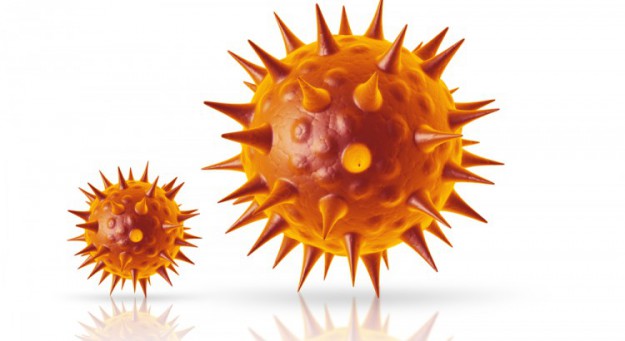9 Things you need to know about the Ebola virus
mis à jour le 14 July 2015 à 18:34How do you get the Ebola virus? Where does it come from? What are the symptoms? Is the disease really fatal? Here are 9 things you NEED to know about this deadly virus.
WHERE DOES THE EBOLA VIRUS COME FROM?
Even if the origin of the Ebola virus - also called Ebola hemorrhagic fever - is not exactly knows, we consider that the frugivorous bats to be the likely initial hosts of this virus. It is also found in chimpanzees, gorillas, antelopes and other jungle animals. The virus can be transmitted to man via blood, body liquids and the tissues of infected animals.
CAN IT BE TRANSMITTED FROM MAN TO MAN?
Yes, the infection is made by direct contact (by damaged skin or the mucous membranes) with the blood, the biological liquids or the secretions (saliva, urine, sperm) of the sick person. In Africa, the rites of burial where the surroundings are in direct contact with the cadaver of the sick person are a source of contagion. On the other hand, contrary to a widespread belief, the Ebola virus isn't transmitted by air.
HOW LONG IS A PERSON CONTAGIOUS?
The sick people can transmit the infection as long as their blood and their secretions contain the virus, that is to say for several weeks (it can be present in the body for 7 weeks after the disappearance of symptoms).
Do we feel SICK IMMEDIATELY?
Not necessarily. It can last from 2 to 21 days between the moment we contract the Ebola virus and the moment the symptoms appear. The patient is not contagious as long as he presents no symptoms.
WHAT ARE THE SYMPTOMS?
Generally it is the fever that appears first; we can also have skin rashes, irritation of the throat, internal and external bleedings, vomiting and diarrhoea. These symptoms are combined with an intense tiredness. A blood test enables the confirmation of the diagnosis of Ebola.
IS THE EBOLA VIRUS ALWAYS FATAL?
Unfortunately, it often is, because it is one of the most dangerous viruses for man. We consider that the virus is responsible for the current epidemic killing approximately 60% of the infected people.
IS THERE A VACCINE?
Not yet but several pharmaceutical companies are working now on the development of a vaccine. The most promising track seems to come from the United States where the Crucell company, supported by the American authorities of health, has already tested its vaccine successfully on chimpanzees. Trials on human beings are in progress at the moment.
IS THERE A TREATMENT?
No, and that's why the panic reigns around Ebola. Most of the time sick patients arrive at the hospital dehydrated and have to be put on a drip. If some medicine can be administered, none has demonstrated real efficiency. Considering the urgency of the situation, experimental treatments are proposed for sick people. It is the case of the ZMapp, a cocktail of three antibodies are used to target the contaminated cells and activate the immunizing reaction.
WHAT ARE THE PRECAUTIONS TO TAKE?
At present, the WHO (World Health Organization) does not forbid flights coming from or going to the countries affected by the Ebola virus. Nevertheless, many people have stopped going there. If you have to go in one of these countries, here are the precautions to take:
- Wash your hands very regularly in water and use soap or hydro-alcoholic gel.
- Avoid any contact with people who have a high fever or are infected
- Avoid any contact with wild animals
- Do not consume, or handle/manipulate meat of bush animals
- Cook the animal products (meat, milk) well before consuming them
- Contact your embassy quickly and present yourself in a hospital in case of fever higher than 38.5 °C
Sources: Ministry of Social Affairs and Health, World Health Organization
Read more on Ebola:
Ebola: 5 Beliefs surrounding the epidemic
Maureen Diament




